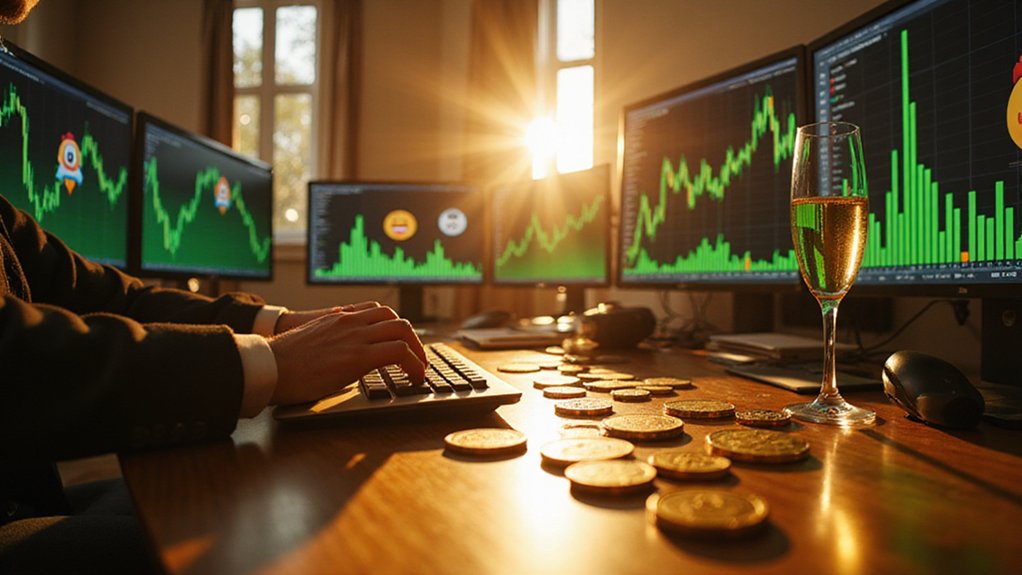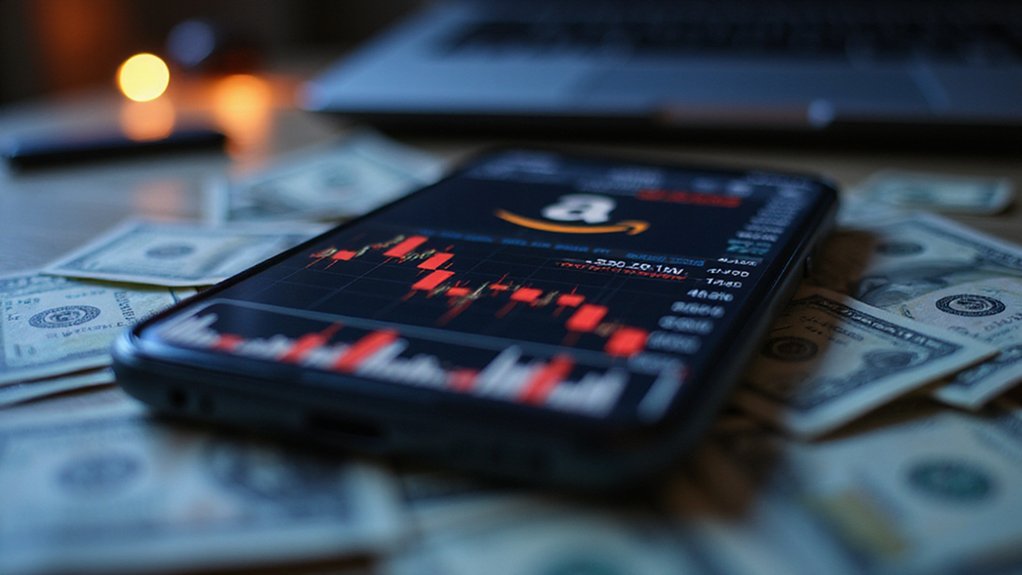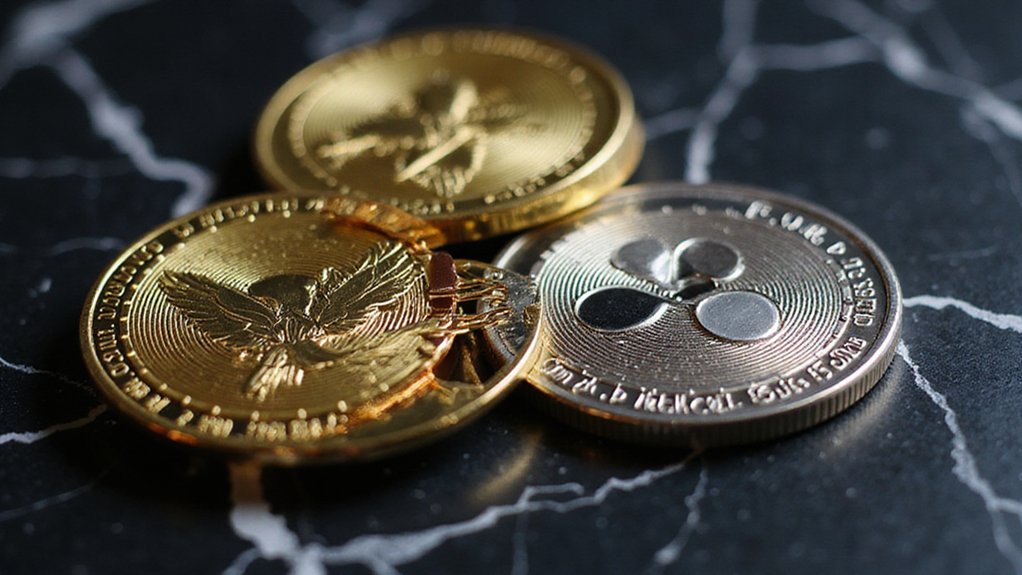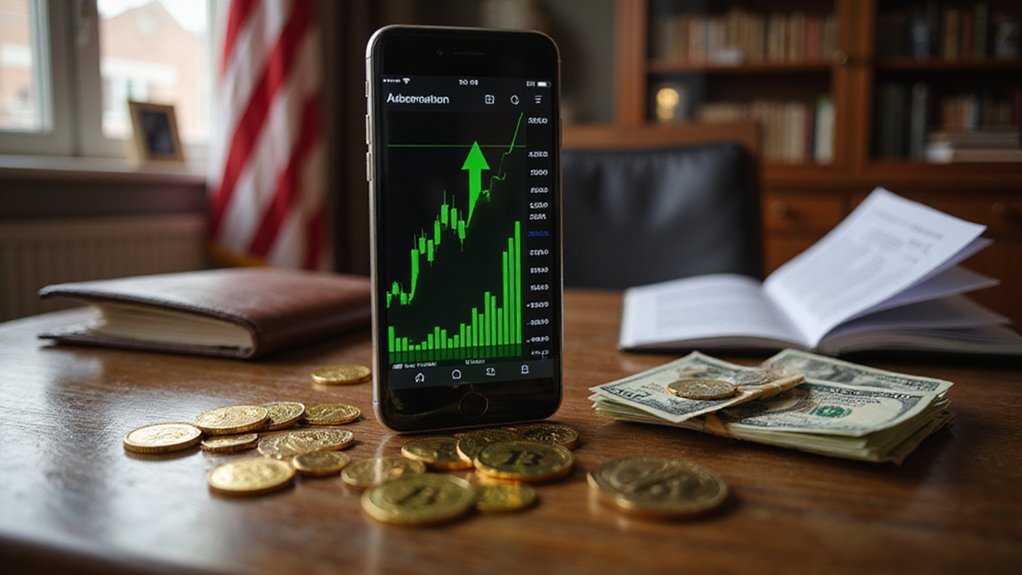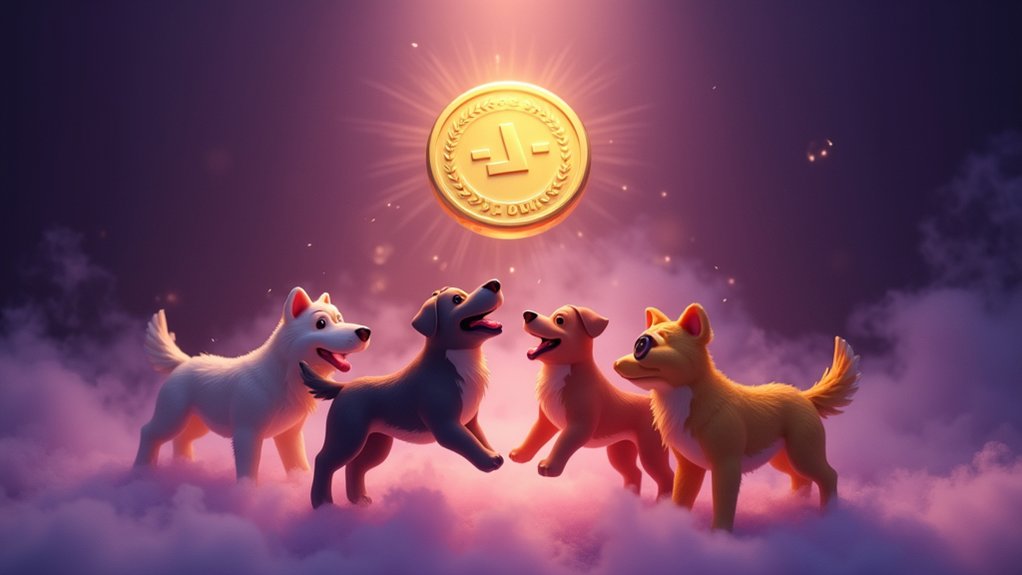While traditional investors debate the merits of quarterly earnings reports and dividend yields, the memecoin market delivered a rather more theatrical performance in July—surging nearly $17 billion to reach a collective market capitalization of approximately $72 billion.
This 29% rally from June’s $55 billion valuation represented a curious phenomenon where digital assets named after internet jokes collectively outperformed most established cryptocurrency sectors by gaining approximately 31%. The surge, driven partly by Ethereum and Solana price rallies, attracted both retail enthusiasts and institutional investors seeking exposure to assets that would have seemed preposterous just years ago.
Influential “whale” investors greatly contributed to this speculative renaissance, with one notable portfolio reportedly approaching $57 million in memecoin holdings. These large-scale participants helped fuel a broader ecosystem frenzy that saw 19,900 new tokens launch on Solana alone during July—a 60% spike in launchpad activity that underscored the renewed appetite for high-risk, high-reward speculation.
Dogecoin, the grandfather of memecoins, rallied more than 21% over thirty days, though technical indicators suggest momentum exhaustion near resistance levels between $0.21 and $0.23. The token’s recovery from lows near $0.1880 to approximately $0.2121 demonstrates the volatile nature of assets whose value propositions remain largely dependent on community enthusiasm rather than traditional fundamentals.
Meanwhile, Bonk (BONK), Solana’s flagship memecoin, surged over 34% in early July, boosted by ETF speculation and technical breakout patterns. Daily trading volumes exceeded $1 billion during the rally, while holder counts approached one million—suggesting broader adoption beyond mere speculative trading.
The market dynamics reveal a fascinating paradox: newer entrants like Pepeto are positioning themselves as utility-driven alternatives to purely speculative tokens, potentially altering traditional memecoin characteristics. Yet this evolution occurs within a sector still characterized by rapid price swings and weakening support levels that pose considerable downside risks.
Increased liquidity and investor appetite for higher-risk assets, amplified by social media engagement and community-driven marketing, created conditions where speculative frenzy could flourish—demonstrating that in cryptocurrency markets, theatrical performance often trumps conventional analysis. As investors navigate this volatile landscape, many are exploring DeFi platforms like Uniswap and Aave to lend and borrow these digital assets, though they face risks from smart contract vulnerabilities and regulatory uncertainty.
